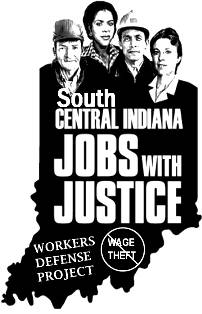When I consider the ways our Congressman and most of our area legislators speak and act on the issues of gay equality, racial inclusion, and immigration reform, I see in the background a regional culture of exclusionary thinking, a culture handed down from generation to generation and shaped, probably, by the expulsion of African-Americans, beginning over a century ago.
We see on page 66 of James Loewen’s “Sundown Towns” that several counties in our area (e.g. Morgan, Greene, Brown) were sundown counties—entire counties where African-Americans used to be warned not to remain after sundown, on pain of physical injury or worse. Five of the 13 counties in the 9th Congressional District were sundown counties. Many towns in the other eight were sundown towns, as documented by Loewen’s ongoing research at www.uvm.edu/~jloewen/sundown. (Of the states, Indiana was second only to Illinois in the number of its sundown towns.)
On page 54 of Leonard J. Moore’s “Citizen Klansmen,” we find the percentage of KKK membership in the 1920s in each Indiana county. It was 27, 26, 26, 24, 18, 17, and 17 per cent, respectively, in Morgan, Clay, Johnson, Monroe, Lawrence, Greene, and Brown counties.
Loewen draws the connection I infer above: “Sundown towns are more likely than other communities to oppose additional ‘theys’—other racial groups, gays and lesbians, unusual religious groups, hippies, and Americans who look different or think or act unconventionally.” The problem can be circular, Loewen argues: former and current sundown towns are attractive to self-identified racists.
I myself have seen the effects of this culture of exclusionary thinking in a nearby, nearly all-white county seat. Call it Town X. Few police units in our region comply consistently (if at all) with Indiana’s hate-crime reporting law. My efforts to talk to religious, racial, and sexual minorities in Town X about banding together to request compliance with the law were eye-opening. Those who weren’t afraid of physical violence for making themselves “unnecessarily” visible were afraid of vandalism, economic boycotts, and/or verbal intimidation.
Predictably, antagonism toward Latino immigrants in Town X appears to be strong across all social classes, despite the fact that comprehensive immigration reform would be in the town’s economic self-interest.
It’s an old story, alas. “Some residents feel that a limited future is not too high a price to pay for the joys of living in an all-white town,” notes Loewen wryly. He quotes a white barber in a southern Illinois sundown town, who told researchers in 1958: “Even if a new industry came in and said they would settle here if they could hire Negroes[,] I don’t think we would let them… [As] bad as we need industry, if it meant bringing in Negroes, we would not want it.”
In our region today, that sentiment apparently extends to gays, undocumented immigrants, and I-69 engineers who speak Spanish.
The demographics of the districts represented by our Congressman and the state legislators in our area have been shaped through historic acts of violence and maintained through hostility and intimidation. That reality needs to be admitted and changed, not denied, ignored or defended.
